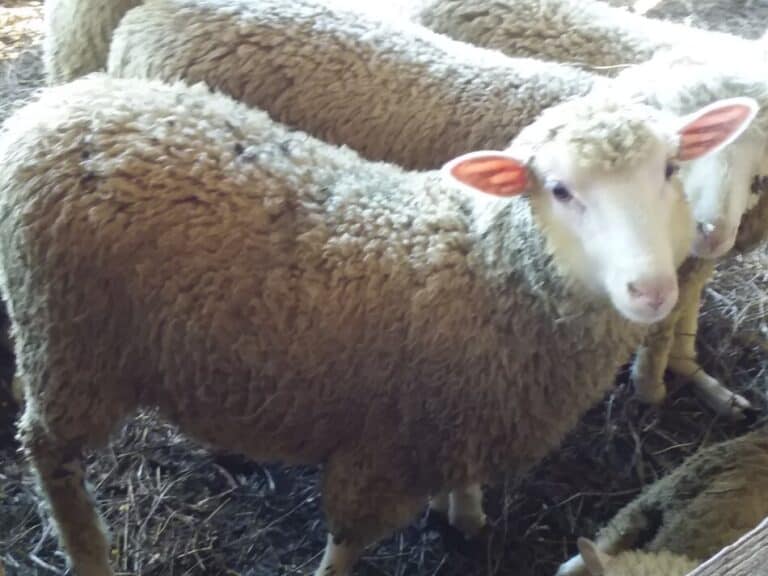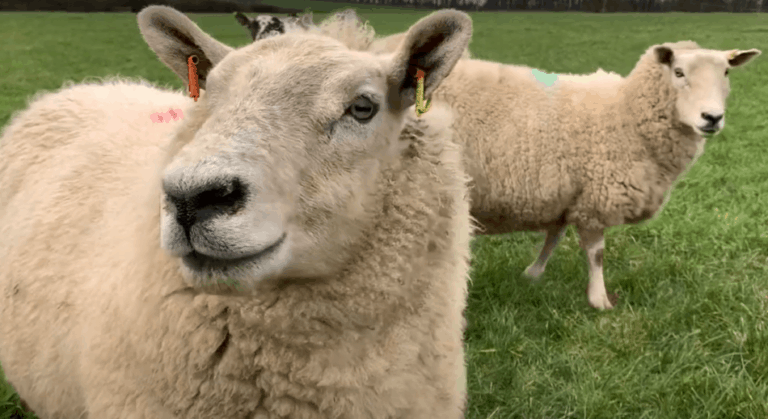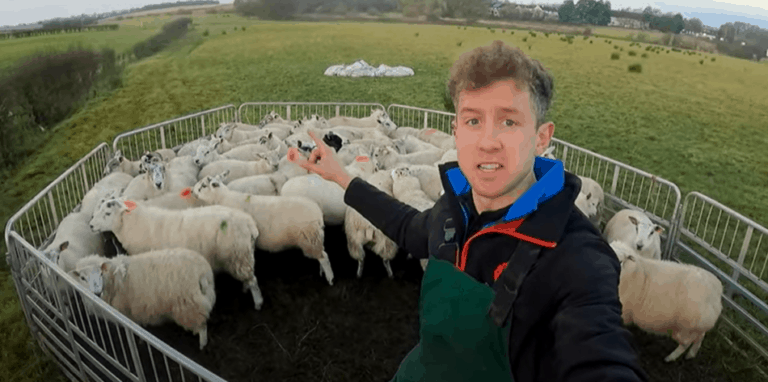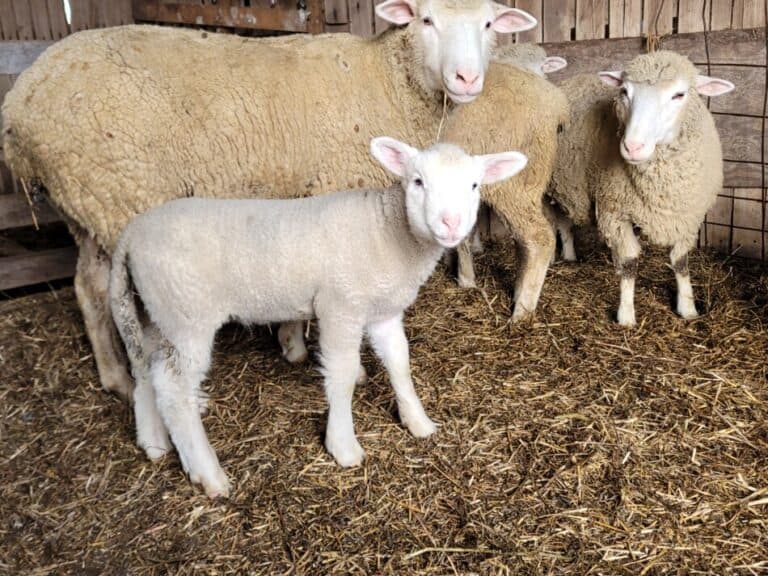When Should You Put The Ram In With Your Ewes?
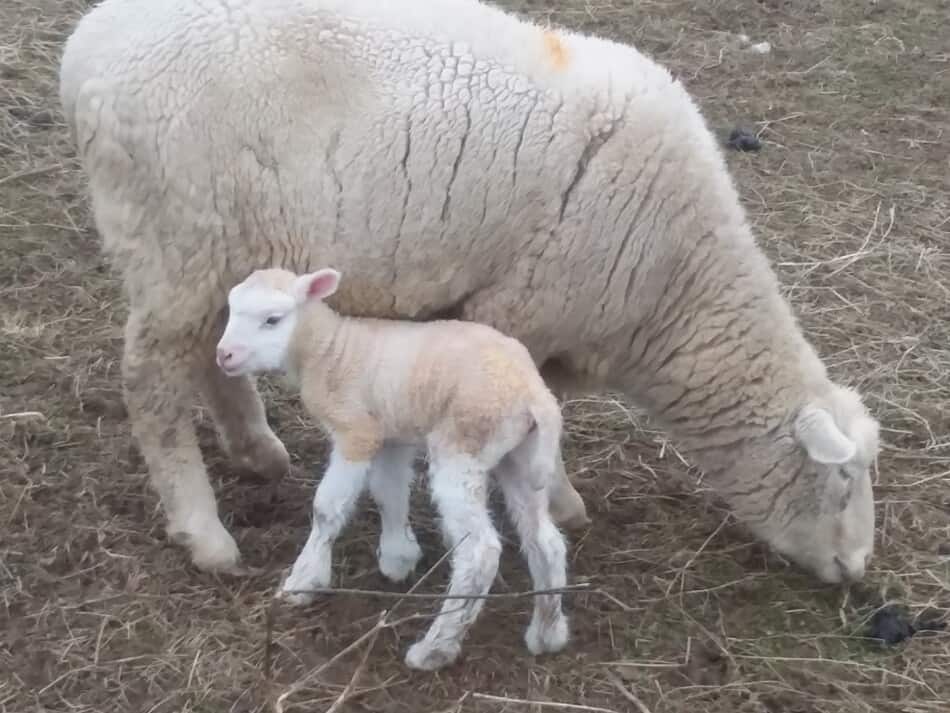
Breeding season is when you set up the rest of your flock’s year. Having lambs born at the time of the year that suits you and your sheep the best will make lambing season go more smoothly for everyone, both you and your sheep!
To have lambs born at the best time for your area, when should you put in the ram?
Rams should be put in with ewes 5 months before the planned start of lambing season. In warmer areas, rams are put with ewes in October, for colder areas or pasture lambing, rams are put in December 1st.
| Breeding Date | Lambing Date | Be Ready For Early Lambs By |
| December 1st | May 1st | mid April |
| November 1st | April 1st | mid March |
| October 1st | March 1st | mid February |
Put rams with ewes 5 months before you want lambing to begin
You should put your rams in with the ewe flock 5 months before you want the lambing season to begin.
October is traditionally the most popular time to put in the rams, which will give you March lambing.
However, March lambing is best done in warmer parts of the country than here or for folks planning to have their sheep lamb inside.
Raising Sheep For Profit will walk you through a basic budget for raising sheep as a business.
Since we lamb on pasture, we put the rams in later to push back lambing.
We put our rams in December 1st, which gives us a better shot at good weather during the lambing season, since the first lambs show up in late April.
If you have sheep that can breed year round, like Dorset or Polypay, you can have lambs anytime of the year, keeping in mind spring is always easier to breed for than fall or winter.
If your rams are with your ewes year round, expect some “surprise” lambs. While this sounds like a good thing, it might not be if they catch you off guard or are born on a really rough night, weather wise.
A good rule is: only have rams in with your ewes if 5 months from now you would be happy to have lambs.
If 5 months from now is terrible weather in your part of the world, do not keep the rams in year round! Pull the rams out, we have them out from July to December, to keep clear of cold weather lambings.
In the picture above, you can see one of our ewes with a surprise baby, how do I know it’s a surprise?
Because there is no grass, this ewe is eating hay, not new grass, so this little lamb is unexpected.
The weather was fine, chilly but fine, so we brought her and baby to the barn for better feed and to keep a closer eye on the lamb.
When Do Sheep Breed? is more of a beginners look at your breeding schedule options, including a look at out of season lambing.
You need 1.5 mature rams per 100 ewes plus one extra
You need to have 1.5 mature rams per 100 ewes, plus one ram to make sure all of your ewes get bred on time. If you have ewe lambs, go with 2% rams, or 2 rams per 100 ewe lambs plus one.
Using less ram power than 1.5% will increase lambing window and increase chances of open (not bred) females. Using 1.5 mature rams plus one will keep your breeding window tight and increases the chances that all ewes are bred.
The “plus one” is to make sure that you have the fertile rams that you need.
Every once in a while, a ram will not perform well for you, low fertility, parasite problems, under conditioned, etc. Having that extra ram is precaution to ensure a good breeding season and a good lambing season.
If you have 100 ewes you need 3 rams.
100 x 1.5%= 1.5 + 1 = 2.5 which is 3 rams
Technically, you need 2.5 rams, so you could go with 2 really good rams or split the flock and put some of the ewes with a ram lamb or take your chances with 2 rams and maybe have a longer lambing season than you would like.
Smaller flocks use 1 mature ram per 35-50 ewes
Small flocks would need to use just one ram, with mature rams able to breed 35-50 ewes and ram lambs able to breed 15-30. Having a “plus one” ram, as suggested above is a good idea, if you can do it, but most small flocks don’t.
If you have 10 ewes, you really just need one ram. If you have up to 50 ewes, most small farmers would be using just one ram.
The reason for the “plus one” is a bit of extra security, but not all small farmers would be willing or able to buy and feed another ram. If that’s the case for you, make sure you have your ram in good condition before breeding.
This means, good body weight, dewormed, feet trimmed (if needed) and used to exercise, so keep him in a pen or pasture with some room to run around a bit.
Ewe lambs need more rams per female than mature ewes
If you have a high percentage of ewe lambs to be bred, consider going with more ram power rather than less. Why? Ewe lambs will not seek the ram, but mature ewes will.
Most ewe lambs will not seek the ram.
Jason McCune, grass based sheep farmer in Ohio
Since your ewe lambs will not go to the ram, the ram has to find her. It’s more likely she will not be bred if there are other females in heat that same day.
This is why it’s a good practice to have extra ram power in with younger females during breeding season, to make sure all ewe lambs are bred.
Take the ram out by July
As mentioned above, your ewes will be lambing 5 months from breeding. If you have a time in your area that will make lambing difficult, do not have the rams in with ewes 5 months out from that hard to work with weather.
We take the rams out in July and keep them out until the 1st of December. The rams go into the breeding flock on December 1st then get pulled out in the summer, usually at a deworming in July, when the flock is at the barn anyway.
The reason the rams come out in July is that usually in August, some ewes will start coming into heat again. If bred in August they would lamb in January, yikes! We don’t want that in our area!
If your rams are in with ewes at a time that makes you say “yikes” to lambs in 5 months, those rams need to be out!
If you are not comfortable with keeping your rams in with the flock for this long, that’s fine, take them out whenever it makes the most sense to you.
Some folks take rams out of the flock right before lambing, we don’t. The rams do not seem to bother any one, ewes or lambs and it’s one less pen or pasture to worry about during lambing season.
Have ewes in good condition in the pre breeding season
It’s easy to focus on the ram, putting him in officially starts the breeding season, after all! But don’t forget about the ewes!
Making sure that the ewe flock is in good condition and ready for breeding will help ensure a good lambing season, for both you and your flock.
A ewe in good body condition looks great. She’s spunky, well filled out (not fat, just full of grass) has good looking feet and is keeping on weight (meaning you can’t see a split in her wool over her backbone).
If she’s keeping on weight, she is likely to have good feet and teeth and is functioning well in your management system as far as available forages and parasite management are concerned.
If your ewes are not in good condition, you can try to fix this by deworming them and making sure they have plenty of grass to eat at 3-4 weeks pre breeding season. Ewes that do not quickly improve after deworming should be sold.
Here is an interesting article at Sheep 201, going over the basics of reproduction in rams.
Resources:
Rams, Meat & Livestock Australia, joining rate for sheep
Sheep 201: Reproduction in the Ram, ram to ewe ratio
